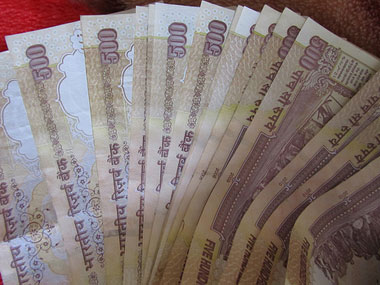India’s fundamentals are not as bad as they have been made out to be by the currency markets.
The case for the Indian rupee strengthening from its lows is strong and, in all likelihood, it will strengthen down the line as markets stabilise.
However, that’s not the point of this analysis.
The point is that India cannot sit on its backside and expect that a large economy, with a young and growing labour force, will drive itself forward.
It also cannot look at other countries, especially debt-ridden countries in the eurozone, and claim it is better off than them.
Indian businesses have to remove the idea that the rupee is a one-way street, in which the currency will strengthen at all points of time.
[caption id=“attachment_157974” align=“alignleft” width=“380” caption=“AndrewMiddleton/Flickr”]
 [/caption]
[/caption]
The attitude that India is a growth economy and money will pour in is what has driven this country to panic when things turned around.
India has to reconcile itself to the fact that unless the stakeholders work towards a stronger economy, it will not happen. The currency markets are giving a clear warning that India cannot expect money to flow in to the country irrespective of policies.
Even a star sportsman will struggle if he or she loses the way - look at Tiger Woods, for example. India too seems have to have lost its way. The country has to work hard to regain its star status and if it does so, it will actually be because of the panic caused by a falling rupee.
India went into panic mode on 15 December when the rupee crossed 54 to the dollar.The rupee fell to its lowest on record when it crossed the 54 level, and the so-called experts were screaming for the RBI to do something about the rupee’s fall.
The media played to the gallery with various analyses on who will be affected and what are the repercussions of a weak rupee.
There were even people praying for gods to step in to prevent the rupee from falling further! The way the fall in rupee was portrayed seemed to suggest that the Indian economy was collapsing.
The RBI obliged by first intervening to sell dollars to strengthen the rupee and then, by imposing curbs on forward transactions and open long positions on the currency pair.
The rupee strengthened on the back of the RBI moves and came off from Rs 54 to Rs 52.50 levels.
It is unlikely that the rupee will test its lows in the near future given the RBI’s curbs and given the fact that the central bank is now being viewed as ready to act on further rupee weakness.
Host of factors driving rupee down
It is a debatable point whether 54 is the wrong level for the rupee. As with all markets, the rupee’s fall was more momentum-led than fundamental-led.
On the market side, the rupee weakened on the back of strong dollar strength with the US Dollar index rising by 7.5 percent since August 2008.
On the fundamental side, the widening trade gap, which has gone up by over 30 percent year on year in the April-November 2011 period has hit sentiment on the rupee.
The markets are worried about a rising current account gap due to the rise in the trade deficit. The current account deficit is expected to cross 3.5 percent of GDP in 2011-12 against levels of 2.6 percent of GDP seen in 2010-11.
The worries over the maturities of FCCB (foreign currency convertible bonds) to the extent of Rs 33,000 crore ($6.2 billion), which are coming up for repayment in 2012, have also played a factor in driving the rupee lower.
On the sentiment side, the lack of political consensus on reforms and the government’s inability to give confidence to investors about the path of the economy has placed pressure on the rupee.
On the capital account front, the headline grabbing foreign institutional investment flows (equity plus debt) were, in fact, positive to the extent of Rs 16,000 crore or $3 billion (January-November 2011), while FDI (foreign direct investment) flows at Rs 1,11,000 crore, or $21 billion, for April-August 2011 was higher by over 85 percent on a year-on-year basis.
India is still a long way off from a eurozone-style crisis, where countries with high debt are facing recession due to forced austerity measures.
In contrast, India’s GDP growth for 2011-12 is forecast at 7-7.5 percent levels. India foreign exchange reserves at over $300 billion are equivalent to seven months of imports.
The RBI has room to infuse liquidity and reduce interest rates if growth falls below trend as the CRR (Cash Reserve Ratio) is at 6 percent of net deposits and the benchmark policy rate, the repo rate, is at 8.5 percent.
Arjun Parthasarathy is the editor of www.investorsareidiots.com , a web site for investors.
George Albert is a Chicago-based trend watcher and edits www.capturetrends.com
)